After months spent designing product prototypes, graduate student teams in the course ME310, Engineering Design Entrepreneurship and Innovation, at Stanford University drop what they’re doing and return to an idea they had discarded as impossible.
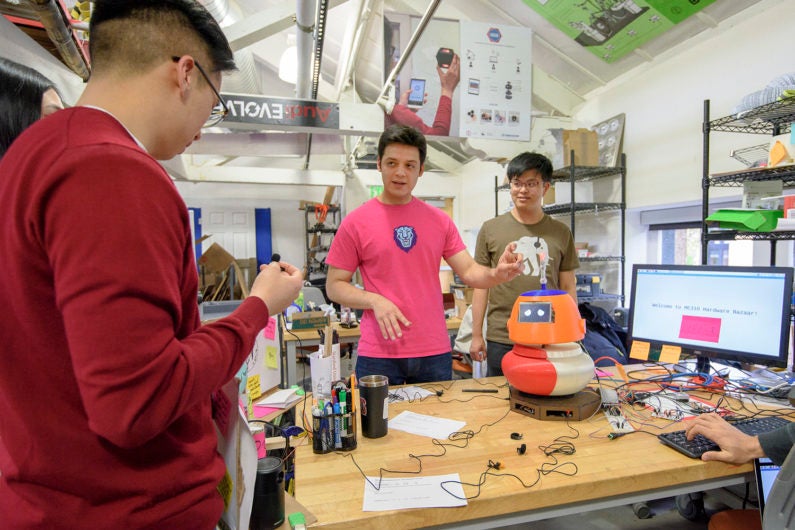
At the Hardware Bazaar, Martin Perez, center, and Ye Wang, right, describe their robot designed to facilitate group interaction among elementary school children in China. The bazaar offers a sneak peek of the projects weeks before final presentations. (Image credit: L.A. Cicero)
A fitness app team pivots to work on breathing masks, package delivery begets an air-purifying desk and a smart home system turns into an automated diaper changer (a design the team regarded as “infamous”). This task, called the “dark horse,” stimulates experimentation, which is essential to this distinctive design innovation course.
During the nine-month-long course, student teams brainstorm, design, build, test and create professional-quality prototype products for a sponsoring industry collaborator. Although they have plenty of coaching support along the way from faculty, industry professionals and class alumni, the course pushes students to depend primarily on their team, generating and exploring ideas as research and development teams do in the real world.
“I am of the opinion, with some evidence, that learning best takes place when learners ask the questions and understand why the question is relevant to their work, lives or projects,” said Larry Leifer, BS ’62, MS ’63, PhD ’69, professor of mechanical engineering and instructor for ME310. Leifer was among the course’s first teaching assistants in the late ‘60s. “This is profoundly different from having a lecturer ask questions that seek regurgitation of lectured material.”
In addition to the skills they develop in design thinking and engineering, students learn how to work with a budget and with teammates in other countries. The course has connected with over 20 universities to run ME310-like programs worldwide. Current students in all of these programs come to Stanford at the beginning and end of the course, while Stanford students visit their international graduate student teammates over spring break.
“In ME310, you work on real-world problems from companies, actually learn useful 21st-century skills in globally distributed group collaboration and communication. This is really hands-on experience talking with users and building functioning solutions,” said Tamara Carleton, PhD ‘10, an alumna of the course who co-authored a conference paper about the history of the course in 2009. “ME310 goes beyond theory and design thinking to help students make ideas come to life in teams.”
In all their tasks, students are encouraged to “dance with ambiguity,” a trademark phrase of Leifer’s that describes the class’s commitment to a radically creative design process.

Image credit: Courtesy Kelly Johnson
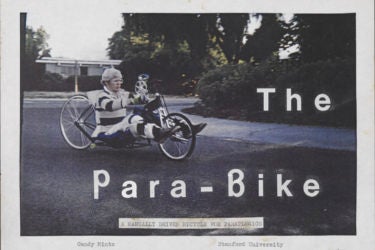
Image credit: Courtesy Stanford University Libraries
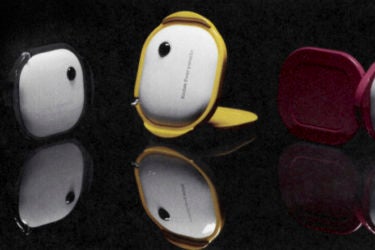
Image credit: Courtesy Stanford University Libraries

Image credit: Courtesy Stanford University Libraries
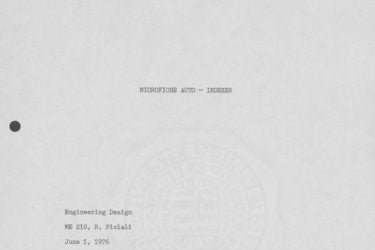
Image credit: Courtesy Stanford University Libraries
50 years in the making
ME310 originated as ME201 in 1967 to give students hands-on production experience. In the first decades, projects often addressed specific inefficiencies or gaps in manufacturing systems. Now, the course tends toward more future-focused ideas, many of which feature robotics and artificial intelligence.
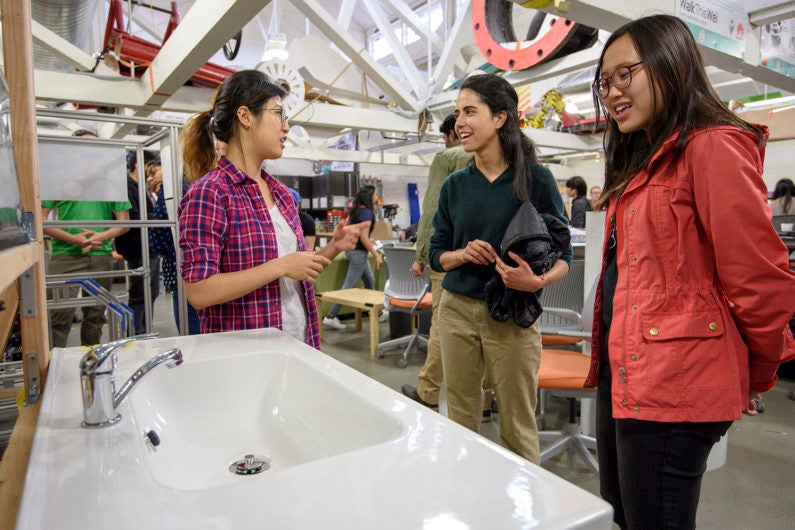
Graduate students So Yeon Park, left, and Joyce Law, right, talk about their sink, which diverts and stores greywater – used water that isn’t heavily contaminated – so it can be repurposed elsewhere, like to water a garden. (Image credit: L.A. Cicero)
Students begin their ME310 journey with a very general product request from an industry collaborator, such as make car sharing more personal or develop accessible tools for water quality measurement.
“It’s not a completely open slate, but it’s darn close,” said George Toye, co-instructor of ME310 and adjunct professor of mechanical engineering at Stanford. The third instructor of ME310 is Mark Cutkosky, the Fletcher Jones Chair in the School of Engineering and professor of mechanical engineering.
With open-ended prompts, the process of brainstorming and need-finding for suitable products is a formidable hurdle for many of the students who are accustomed to a more direct path to solutions.
“We were sitting for five hours and came up with four ideas. And I think none of them were any good,” recalled Siddhant Chandra, a graduate student in civil and environmental engineering. “Our professor reassured us that was normal and said we had to practice every day.”
(To keep this ability fresh, Chandra now carries around a notebook to write down ideas and observations as they come to him – a practice suggested by Toye.)
Throughout the course, teammates at Stanford and abroad get input from potential users, industry collaborators and the coaching and teaching staff. Nevertheless, the students must take ownership of every decision and action.
“They don’t pass judgment on our ideas and the ambiguity is a little uncomfortable,” said Elliot Helms, a graduate student in mechanical engineering. “Key takeaways for me are to drag out that part of the design process where you don’t really know what you’re doing and to pay attention to emotional instincts even if they don’t seem very logical.”
Mid-year tasks that force the teams to pivot from their current trajectories, such as the dark horse prototype, help students experience the advantages of flexibility in the design process. Another example is the “funk-tional” prototype, an analogy for cost-friendly manufacturing that maintains the necessary functions of the prototype with complete disregard for the aesthetics.
A record of success
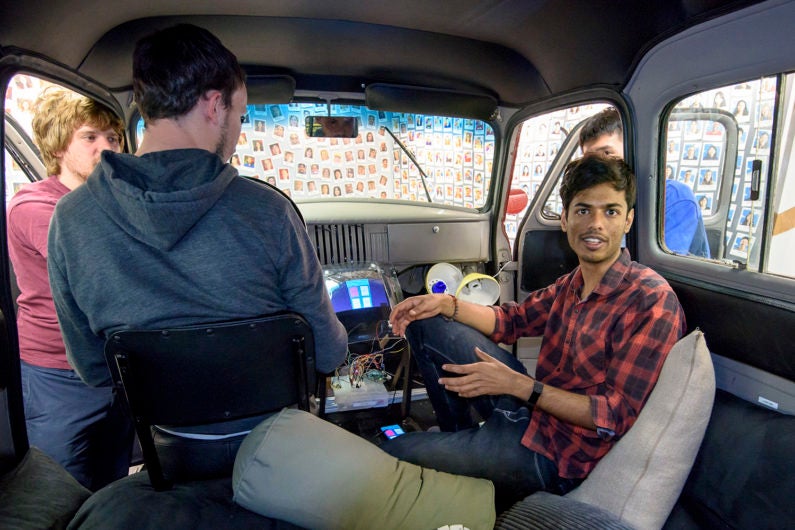
Inside the d.school bus, graduate student Karthik Vickraman, right, describes his group’s prototype console. Designed for car sharing, it’s customizable and can stand up to substantial use. (Image credit: L.A. Cicero)
Over the decades, student teams have produced a number of breakthrough innovations and marketable prototypes. One special source of pride is a modular satellite that has saved an industry collaborator hundreds of millions of dollars. Another favorite is a set of eye makeup applicators called Perfect Eyes. Working with a South American cosmetics manufacturer, the team leveraged its wide range of makeup experience – some students had never used makeup before – to create a brush and pad that mount directly on the fingertips for easy mascara and eye shadow application.
Among students’ most important assignments are quarterly project reports where they painstakingly detail what they did, why they did it and what they learned during the development of their product. Past reports are archived by the Terman Engineering Library at Stanford.
“In this class, we want them to record what didn’t work, too. Those documents are a wealth of knowledge,” Toye said.
Students, reuniting with their international collaborators, share their final prototypes at the Stanford Design EXPErience Fair in mid-June. Attendees include industry professionals, faculty, friends and alumni.
The memorable, rigorous methods of ME310 have made the course a favorite among alumni, who frequently return to lend advice. And, with each passing year, the already substantial ME310 community becomes bigger and spreads further.
“ME310 seeks to better balance the equation between cooperation and collaboration, between doing what’s expected and ‘agreeing to disagree,’” Leifer said. “It is a paradigm for re-designing our cultures at global scale. It is no longer just a course. It has become a movement.”
Cutkosky is a member of Stanford Bio-X and the Stanford Neurosciences Institute. Leifer is founding director of Stanford’s Center for Design Research and a member of Stanford Bio-X and the Stanford Woods Institute for the Environment.